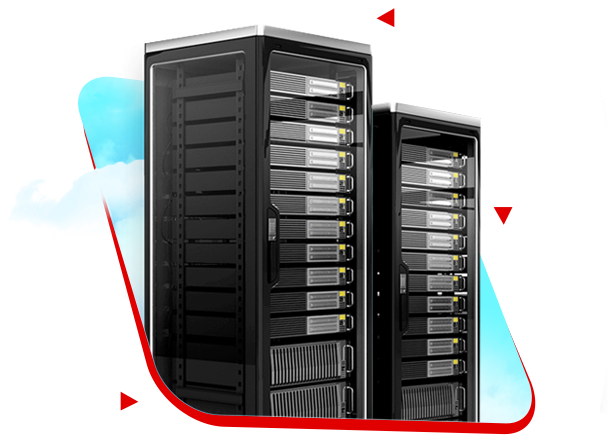
Storing a large amount of information and keeping it safe is no joke at all. It happens to be a topic that can turn into a nightmare if you make the wrong decision!
We all have a lot of personal and business information, some of which are life-threatening for us. For this reason, if we are very smart, we store them in several different storage spaces, such as an external hard drive. But in organizations where the volume of information is much greater and their importance is higher, we see more sensitive conditions. Data loss.
Maybe relying on the old methods such as providing storage devices – such as an external hard drive – is not very efficient; Because there are issues such as costs, easy access, security, etc. that you should consider.
On the other hand, according to research institute IDC, it is estimated that 80% of all information will consist of unstructured data by 2025. Therefore, it is not even possible to store this amount of information on hard drives and storage drives. Therefore, a new solution should be thought of.
Thanks to new information storage technologies such as Object Storage, you can store an unlimited amount of your data in a cloud space. In this article, we want to talk more about this storage model, its advantages and applications.
What is object storage?
Table of Contents
Surely, you know that the use of cloud space for data storage has become more popular these days. Famous examples include services such as Google Drive, Dropbox or One Drive. These services provide you with a space where you can save your information and access this data from anywhere.
Of course, clouds have many uses, but according to the topic of this article, the important issue for us is how to store files and the technology used to do this.
Object storage is one of the latest information storage technologies that has attractive and unique features. This method is actually a flat architecture that is used to store a large amount of data. If we want to explain this method very simply, we must say that each part of your information is stored in a separate unit called Object.
The way you access the information you need is different from the way you access the files stored on your computer or laptop. For this reason, it is suitable for the management and multiple use of large volumes of data.
In the following, we will discuss more about how Object Storage works.
How does object storage work?
As we mentioned, object storage is an integrated and flat system for storing large volumes of files. In fact, several technologies have been integrated into one technology so that you can access your data safely and very quickly and of course indefinitely.
In this section, we want to examine a little more how this cloud computing system works.
In linear storage, all information is in one place, and in object storage, your data is stored in units called objects. In addition, metadata and an identifier are added to the object so that you can quickly access exactly the part you want among a lot of information.
Metadata refers to information such as the place where the data was created, the project in question, the specific topic related to the data, the user who created it, etc.
To better understand this issue, let’s examine the difference between object storage and two other important systems, file storage and block storage.
The difference between object storage and file storage and block storage
Although all three options are common ways to store files, the way they work is different. Of course, let’s say right away that without a doubt, object storage is much better than the other two technologies.
File Storage
This is the system you use to store information on your computer or mobile. In this technology, your data is integrated as information and placed inside folders.
Just like keeping paper sheets in archives, in folders and bins. The most important feature of this system is its hierarchy and you must have its address to access your files.
Block Storage
In this model, you have blocks of information, each of which contains a part of data.
In this system, each piece of data has a different address, and this is its point of distinction compared to file storage.
Object Storage
Object storage is different from both previous options. In this model, the data is stored in a separate repository instead of being a file in a folder. Metadata and an ID identifier are used to access the data. (We mentioned this issue above.)
Since File Storage and Object Storage are more common, we decided to show the difference between these two models in the following table:
| Storage object | File storage | |
| Function | It is suitable for large files and heavy data streams. | Suitable for smaller files. |
| Location | You can save your data in different areas. | Data is stored locally. |
| Scalability | You can use as much as you want | It has operational limitations and cannot be increased to a few petabytes. |
| Ability to analyze | Customizable metadata that allows data to be easily organized and accessible. | Only a few metadata tags can be used. |
Now that we have examined the difference between these three models of data storage, we want to give a simpler example to better understand object storage.
Consider a conventional or multi-storey car park. A specific space is reserved for each car. But in the end, the capacity of each parking lot is known, and when it is full, you have to look for another parking lot. Besides, you must remember the place where you parked your car. But this is not the case in object storage and it is as if you are facing a flat and unlimited space.
Now that you understand the differences more and we tried to open the case a little more with the example above, we will examine how iject storage works.
An object is a package containing information (a whole file or part of a file) with added metadata describing user data. In addition, there is a unique ID identifier to identify the object. Even an object can be divided into smaller pieces so that it can be easily distributed in different places.
Now let’s see what are the advantages of this storage method.
Advantages of object storage
After we reviewed the definition of object storage, how it works and how it differs from other systems, now we know that this method has many advantages; In the following, we will discuss the most important advantages and uses of object storage:
accessibility
Due to the way data is stored in different geographical locations, the possibility of using API and the ability to access it on different devices, you can access the accessibility of your data storage object anytime and anywhere.
In fact, this system does not have a storage file location limitation; That is, you don’t necessarily need to have access to your own system (as a data storage location).

Stability and security
In the object storage system, it is possible to store your data in different locations. Therefore, you can rest easy in terms of system stability and security, and your data stability and security in object storage will not be lost so easily.
Unlimited storage space
As we said in the car parking example, in Object Storage, there is no limit in terms of space or hierarchy. Therefore, you can easily store a large amount of data with unlimited storage space in object storage.
Scalability
Another attractive feature of object storage is the instant scalability of this system. Whenever you run out of space, you can immediately increase it. Scalability in Object Storage
Flexible management
In this storage system, you don’t have to worry about partitions or file paths. Therefore, you can flexibly manage a large amount of data in the storage object and use different capacities.
Custom metadata
As we said, important information is recorded in metadata. But well, they have the ability to customize and you can add any information you want to the metadata of each object.
Less complexity
One of the most important advantages of this service is to remove the complications that we see in the hierarchical File Storage system. Here, there is no more complexity in the object storage of folders and directories, and you have access to information with the least possible delay.
Reasonable cost
When it comes to maintaining and storing large amounts of data, the thought of possible costs makes anyone shudder! But there is nothing to worry about. In the reasonable price of object storage, object storage is a pay-as-you-use system, and some companies even provide you with a certain amount of space for free. In addition, you can also buy monthly plans and pay the excess according to your consumption.
cloud computing
The compatibility of this method of data storage with cloud processing helps companies to take advantage of its various capacities. For example, we can mention high speed or access to cloud computing system and object storage of some information.
Now, with all these words, what kind of people is more useful for Object Storage?
What kind of businesses is object storage suitable for?
The main question here is that with all that said, what kind of businesses is the object storage system suitable for? Stay with us:
Video and entertainment service providers
Object Storage is one of the best options for video and entertainment service providers like YouTube. In these platforms, we are faced with a large amount of information that must be quickly accessible from anywhere.
Archives
Large public and private organizations and companies, such as medical centers, social security, document registration organization, etc., can use object storage to store a large amount of important information.
These organizations usually have integrated processes and each department needs its own information. In addition, most of the information is important, sensitive and possibly confidential.
Artificial intelligence services
Services related to artificial intelligence, Internet of Things, virtual reality and augmented reality have heavy data! For this reason, such projects require cloud computing. Therefore, Object Storage can be the best proposal for data storage.
Storage of user information
There are many sites and applications that we use throughout the day. From internet taxis to food ordering and banking applications, they all have important user information. Therefore, these large collections can take help from object storage.
Content production and publishing services
News agencies, content-oriented sites, social networks, etc., are among the most important businesses for which this service is most necessary! Because they are always involved with a huge amount of data.
Cloud services and storage
Services such as Dropbox or Google Drive, which provide cloud space to users, are other customers of Object Storage.
Well, we talked about everything and now we need to get acquainted with the different types of storage spaces in this model.
Types of storage object storage
These days, most cloud storage service providers such as Amazon S3, Rackspace Cloud Files, Azure Blob Storage and Google Cloud Storage use object storage technology. But this service has different types that you will read about below:
Public storage
This service is exactly the same as Drive Box, Google Drive, or One Drive, which you can use to store and share your files.
Private storage
In this system, cloud computing and object storage are used as a mechanism for storing important files of organizations on internal servers.
hybrid storage
This service is actually a combination of processing, storage and cloud management environment for infrastructure, private or public cloud services such as Amazon’s AWS or Microsoft’s Azure.
Conclusion
The world is filled with information and the volume of this data is increasing every day. Therefore, finding a suitable solution for storing and quickly and safely accessing a large amount of information is inevitable. Undoubtedly, this solution should be powerful, affordable, fast and safe.
Object Storage is one of the best options in front of you. In this article, we talked more about this cloud service and its benefits and said which businesses it is suitable for.
If you have any questions or comments regarding Object Storage, the comments section is open to you.
CATEGORY:Blog











